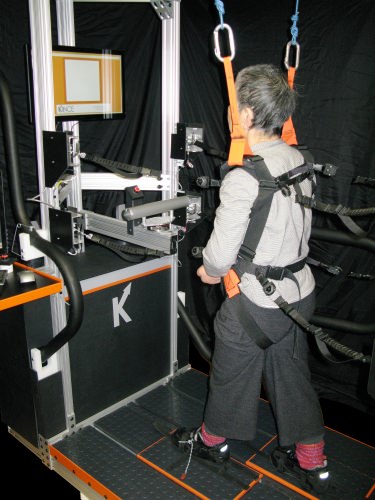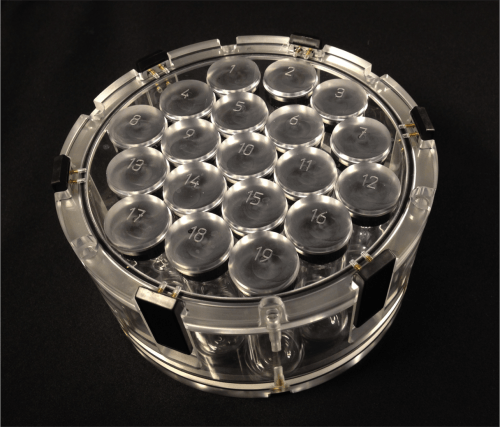New startups ‘graduate’ from UW business accelerator
A second group of companies formed with assistance from the University of Wisconsin–Madison’s Discovery to Product (D2P) has “graduated” from a program designed to advance innovations based on research on campus. The fledglings are working in such areas as growing brain cells, virtual reality and stroke rehabilitation, says D2P director John Biondi.
D2P was formed as a partnership between UW–Madison and the Wisconsin Alumni Research Foundation (WARF) in 2014. The program serves as an access point for university students, faculty and staff with business ideas, and also as a business accelerator inside UW–Madison.

John Biondi
“We’re different from a commercial accelerator as our projects are usually at an earlier stage, since we only accept projects that have not yet formed a company,” Biondi says. “And UW–Madison folks have classes to attend or teach, labs to run and patients to see, so we can’t run the typical six-week, 12-hour-a-day accelerator. Instead, we put them through a structured workshop and then work with them intensely, one-on-one, to do what is needed to mature the project and get it ready for funding.”
UW-Madison is noted for life science research, Biondi says. “Most accelerators won’t touch that kind of project because they have so many complications related to FDA regulations and insurance reimbursement. But we work with complex projects, which include life sciences and engineering-heavy innovations and technologies.”
The seven new companies being formed add to five previously incorporated. This year’s group consists of:
BrainXell
Building on the work of scientific director Su-Chun Zhang, an expert in neural stem cells at UW–Madison’s Waisman Center, BrainXell will grow several types of neural cells for use in drug testing and basic biology. “Our advantage lies in our technology,” Zhang says. “We guide an induced pluripotent stem cell to the specific cell type desired with very high efficiency and consistency. With subsequent expansion, each batch of neurons or support cells will contain hundreds of millions of identical cells that can be used for high throughput screening of candidate drugs and, later, for treating diseases.” Potential customers are already discussing orders.

This device, made by the startup KIINCE, precisely measures the dynamics of walking to help restore motor function after stroke. Photo courtesy of KIINCE
KIINCE
During a 22-year career studying the mechanics and control of leg function, Associate Professor of Kinesiology Kreg Gruben pinpointed why stroke patients have difficulty walking. “We have discovered muscle coordination patterns that correlate with how people walk after a stroke and predict which types of therapy will work,” he says. “Frequently, the ratio of muscle use is slightly off. The compensating behaviors are easy to see, so therapists tend to focus on them rather than the underlying incoordination.” Gruben used D2P funding to build a prototype neuromuscular retraining machine that precisely measures the mechanics of walking and gives corrective feedback. KIINCE is finalizing the product and beginning to execute its strategy to drive clinical adoption.
Xemex
Xemex has developed an adhesive mixing nozzle with no moving parts that slashes waste in applying two-part adhesives. Founders and recent engineering graduates Eric Ronning and Brian Pekron say that each year in North America 120 million “static” nozzles are sold to the auto, electronics and other industries to apply strong, durable epoxy adhesives that must be mixed just before use. Xemex’s mixer reduces waste in the nozzle while improving adhesive performance. Ronning says he and Pekron created the nozzle by writing software that “evolved the internal shape through a Darwinian process.” Xemex is finalizing manufacturing and has interest from large companies.

Calimetrix provides calibration devices, or phantoms, for quantitative magnetic resonance. This phantom contains a known amount of fat, enabling confident assessment of MRI-based fat measurement in multiple scanners. Photo courtesy of Calimetrix
Calimetrix
Magnetic resonance (MR) imaging, which produces stunning images of soft tissue, is now being used to measure the properties of tissue. Researchers and clinicians who will rely on “quantitative MR” need to ensure accuracy, especially when using several MR machines. To verify measurements, Calimetrix makes devices called phantoms that can uniformly calibrate specific types of measurements, such as the proportion of fat. Using MR to measure fat could replace an invasive biopsy to detect fatty liver disease, which affects at least 20 percent of the U.S. population. Calimetrix, formed by radiology Professor Scott Reeder, radiology department senior scientist Jean Brittain, and colleagues, already has customer inquiries.
Holos
Holos Inc. makes an interactive virtual reality (VR) home page and content portal with enhanced web content and user personalization. Instead of forcing VR users to access their content through a cold, sterile environment, Holos offers an interface suited to each user’s preference so they feel more “at home.” Entrepreneurs and recent UW–Madison graduates Dan Borkus and Tyler Waite have long experience in virtual reality.
Wonder [VR] Studio
The suite of virtual reality environments from Wonder [VR] Studio, created by Lisa Frank, provides beautiful and relaxing content for the purchasers of the new VR head-mounted displays. Wonder [VR]’s content is aimed at consumers who want to use their headset investment for more than just gaming, and who also want other non-gamers to enjoy using it as well.
BiopsyAssure
David Jarrard in the Department of Urology is developing an assay that can provide a prostate cancer diagnosis from any prostate cell. Because current biopsy technologies can only confirm a diagnosis with a near-direct hit on a prostate tumor, they can place a patient in a loop of multiple biopsies. Technology from BiopsyAssure reduces or eliminates this requirement.




